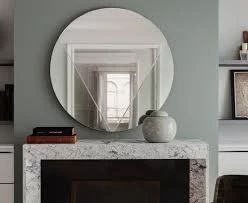

Understanding Float Glass A Comprehensive Overview
Float glass, a fundamental building block in the world of glass manufacturing, has gained widespread popularity due to its unique properties and versatility. This clear, flat glass is produced through a distinctive process that involves floating molten glass on top of molten tin, resulting in a smooth and uniform surface. This article delves into the characteristics, production methods, applications, and advantages of float glass, shedding light on its significance in various industries.
Production Process
The float glass process, developed in the mid-20th century, revolutionized glass manufacturing. In this method, raw materials such as silica sand, soda ash, and limestone are melted in a furnace at high temperatures. Once the mixture is liquefied, it is poured onto a bath of molten tin. The glass naturally forms a flat surface as it spreads out on the tin, allowing gravity to create uniform thickness. The glass is then cooled and cut into sheets of desired size. This innovative technique ensures that float glass is free from distortions and impurities, making it ideal for applications requiring high optical clarity.
Properties and Characteristics
Float glass is renowned for its excellent optical properties. It boasts high light transmission and low distortion, making it suitable for windows, mirrors, and display cases. Its smooth surface is not only aesthetically pleasing but also easy to clean. Moreover, float glass can be manufactured in various thicknesses, typically ranging from 2 mm to 19 mm, to cater to different requirements. It can also be coated or treated to enhance its performance, such as improving thermal insulation or UV resistance.

Applications
The applications of float glass are vast and varied. In the architectural sector, it plays a critical role in the construction of buildings and facades, allowing natural light to penetrate while providing thermal insulation and safety. Additionally, float glass is commonly used in automotive manufacturing for windows and windshields due to its clarity and strength. In the realm of interior design, it enhances aesthetics in furniture design, glass partitions, and decorative mirrors. Its versatility continues to expand, with innovations in coatings and treatments leading to specialized applications in solar panels and safety glass.
Advantages of Float Glass
One of the primary advantages of float glass is its cost-effectiveness. The float process allows for efficient production, resulting in a high-quality product at a competitive price. Furthermore, the glass can be recycled, contributing to sustainable practices within the industry. The ability to customize float glass with different treatments adds to its functionality, enabling it to meet the diverse needs of consumers.
Conclusion
In conclusion, float glass stands as a testament to modern engineering and design. Its unique production process, coupled with desirable properties, makes it an indispensable material in various fields. From architecture to automotive applications, float glass continues to shape our environment, providing clarity, safety, and aesthetic appeal. As industries evolve and demand for advanced materials increases, float glass is likely to remain at the forefront, adapting to new challenges and opportunities in a dynamic market.